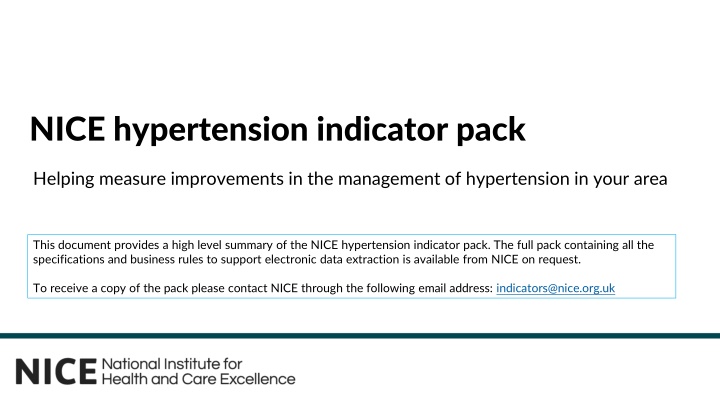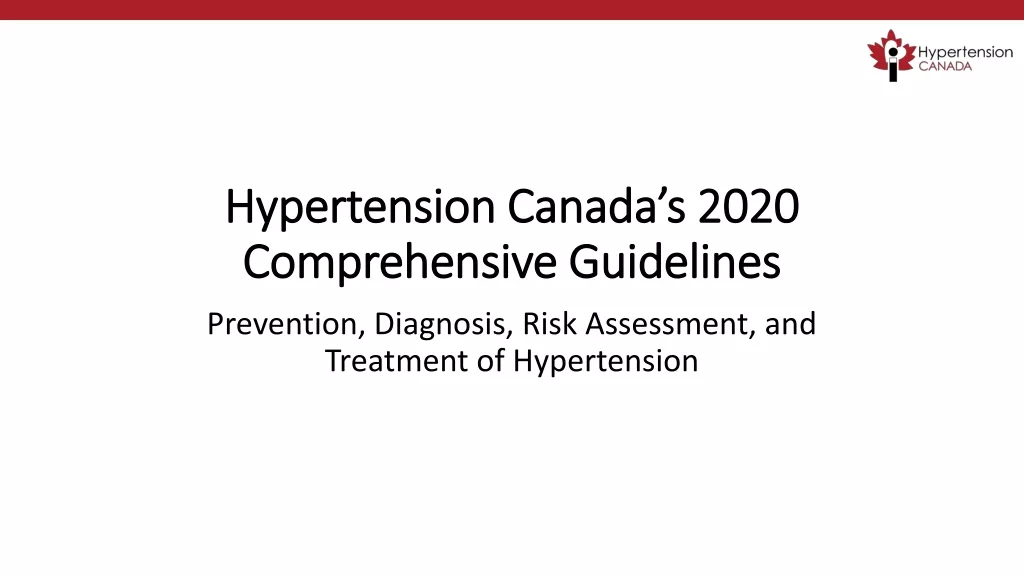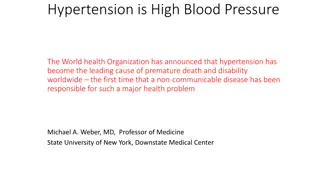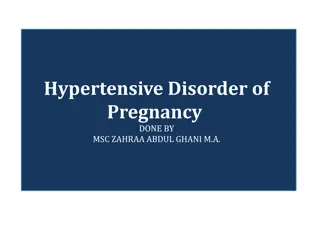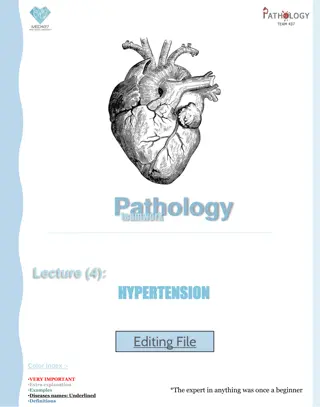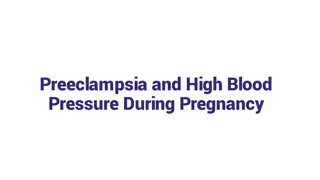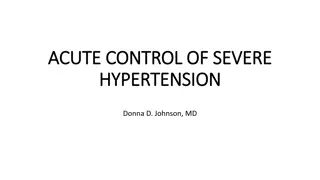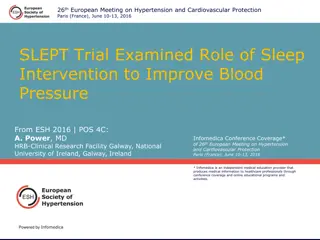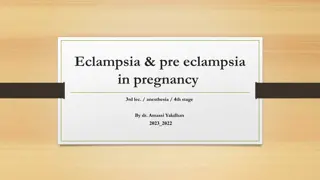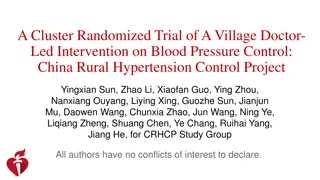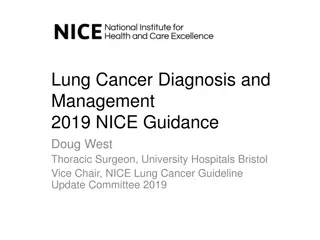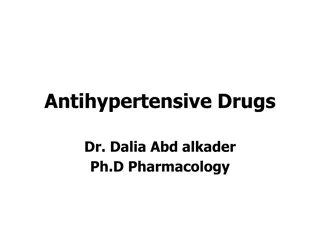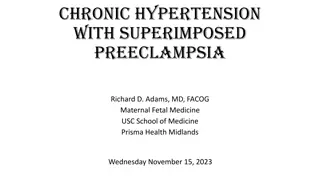Improving Hypertension Management with NICE Indicator Pack
This document provides a high-level summary of the NICE hypertension indicator pack, which includes specifications and business rules for electronic data extraction to measure improvements in hypertension management. It highlights the importance of reducing blood pressure to lower the risk of heart attack and stroke, the prevalence of untreated high blood pressure, and the impact of hypertension on morbidity and mortality. The pack supports local practices in assessing performance, comparing results, and identifying areas for improvement to enhance patient outcomes.
Download Presentation

Please find below an Image/Link to download the presentation.
The content on the website is provided AS IS for your information and personal use only. It may not be sold, licensed, or shared on other websites without obtaining consent from the author.If you encounter any issues during the download, it is possible that the publisher has removed the file from their server.
You are allowed to download the files provided on this website for personal or commercial use, subject to the condition that they are used lawfully. All files are the property of their respective owners.
The content on the website is provided AS IS for your information and personal use only. It may not be sold, licensed, or shared on other websites without obtaining consent from the author.
E N D
Presentation Transcript
NICE hypertension indicator pack Helping measure improvements in the management of hypertension in your area This document provides a high level summary of the NICE hypertension indicator pack. The full pack containing all the specifications and business rules to support electronic data extraction is available from NICE on request. To receive a copy of the pack please contact NICE through the following email address: indicators@nice.org.uk
10mmHg reduction in blood pressure reduces risk of heart attack or stroke by 20% 1 in 3 adults with high blood pressure are not treated to target The challenge Hypertension is one of the most important preventable causes of premature morbidity and mortality in the UK 20% High blood pressure is a contributing factor to around 50% of strokes NHS and social care costs of stroke per year in England are approximately 1.7bn It is a major risk factor for: stroke myocardial infarction heart failure chronic kidney disease cognitive decline.
The NICE hypertension indicator pack The pack consists of specifications and business rules to support electronic data extraction from clinical IT systems in a manner similar to those indicators used in the QOF. Content Uses A collection of validated indicators: Underpinned by NICE guideline NG136 Based on the NICE hypertension quality standard (QS28) Supported by specifications and business rules designed by NHS Digital using electronic data collection Enables local practices to measure their own performance and compare with others Facilitates the development of performance dashboards Helps identify areas for improvement that impact on patient outcomes
How the pack is being used Champs Public Health Collaborative current strategy Saving lives: Reducing pressure . Focus on hypertension: Champs are using the NICE hypertension indicator package to support local quality improvement work on hypertension.
Champs : Champs : Practice-level dashboards to support local quality improvement in care of people with hypertension Source: Wirral CCG, reproduced with permission
Key messages What does this indicator support package provide? The pack provides the specifications and business rules to support electronic data extraction from clinical IT systems in a manner similar to those indicators used in the QOF. The pack supports measurement of the NICE quality standard for hypertension (QS28). How can it be used? The indicators are to help inform and support local measurement to inform quality improvement efforts. Are there any notes of caution when using the package or interpreting the results? To reduce data burden the support package uses existing specifications where possible and presents a pragmatic approach to measuring performance against the NICE quality standard. As a result, the indicators may not be exact matches to the quality statements and should be viewed as pragmatic measures of performance. Can the date ranges be changed? Yes 3 and 12 month date ranges have been included as standard, however these can be amended. Who can answer any further questions? Further questions can be emailed to indicators@nice.org.uk
